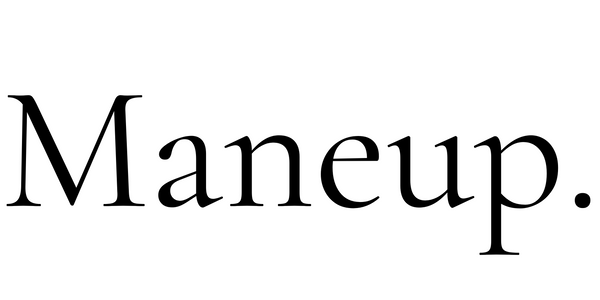In the complex world of hair loss, there are many different treatments that all promise to be the next greatest thing, the truth is that not everyones genetics are the same. Individual response varies, some people respond great to the traditional pharmaceutical drugs like Finasteride and Minoxidil, others do not.
When most people start experiencing hair loss, they first go through a phase of denial. In fact, most people only do something about hair loss after they have lost 50% of their hair. Most then start out with what I consider tier one, this usually consists of a variety of herbal or "natural" remedies like rosemary oil and a host of other nourishing ingredients. While these can certainly help, they rarely actually stop the root cause of hair loss.
Once the "natural" remedies have run their course, most people graduate to the FDA approved hair loss drugs Finasteride, Minoxidil, and Dutasteride. Finasteride and Dutasteride are aggressive DHT blockers, while Minoxidil is a vasodilator. Our article The Hair Loss Pyramid depicts many of the shortcomings of using these drugs.
With the recent tik tok buzz around hair loss, and rosemary oil being touted as a magical cure. I wanted to list some alternative treatments that are actually worth testing out. Of course, if you really want to cure hair loss for good, we recommend our Peptide Hair Loss Formula, but chances are if you already know that.
These "natural" remedies have gotten users amazing results from a variety of underground reddit forums, secret bodybuilding communities, and other online forums we spent way too much time looking at. After all, the best evidence is results.
1. Ketoconazole cream: Also used in many hair loss shampoos, this one actually has a lot of proven efficacy. Apply 1 to 2 times a day, every day. Ketoconazole has been shown to be just as effective as minoxidil in studies with the shampoo. If applied overnight, the cream has an even stronger effect.
2. Emu Oil: Administer 1-2 times daily for enhanced skin and hair DNA synthesis, substantiated by studies showcasing notable hair regrowth.
3. Peppermint Oil: Apply 1-2 times daily as a compelling alternative to minoxidil, delivering comparable results without adverse skin aging effects.
4. Evening primrose oil or borage oil: Topical application fosters hair regrowth by introducing additional fats absorbed through the skin, aiding in inflammation reduction and promoting hair regrowth.
5. Spironolactone Cream: This one has some crazy online transformations, Applied topically, it exhibits benefits in restoring hairlines, blocking androgens, and increasing local estrogen without systemic absorption.
6. BiEstro Cream: The strongest on the list, users have reported restored hair lines to that of their early 20s.
Explanation for topical estrogen (biestro cream): While hair loss is certainly nuanced, one thing everyone agrees on is that very high levels of DHT binding to the scalp accelerates hair loss. While DHT in itself is not bad and is a very necessary bi product of testosterone, if the ratio is off, it can cause hair loss. This is why using topical estrogen on the scalp can balance the ratio of testosterone to estrogen and produce some amazing results.
Additionally, we have also seen what adding estrogen does for hair. Many individuals undergoing male to female sex changes have regrown full heads of hair as a result of added estrogen and decreased androgen load.
It is also not unreasonable to theorize that many users who experience regrowth using Finasteride and Dutasteride comes down to the fact that completely blocking DHT causes a downstream affect which is increased estrogen.
Topical estrogen also has an extremely localized affect, meaning it is not systemic. Most studies show no real increase in estrogenic side affects like gynecomastia.
Supplements
While supplements alone are not going to move the needle at all when it comes to more serious cases of hair loss, maintaining stable nutrient levels can make a difference if they are properly dosed and combined with other treatments. Our turnkey hair supplement Growth Factor has all of these, here is a more detailed explanation.
-
Zinc Picolinate: Consider supplementing 150mg a day for 6-8 weeks if dietary zinc intake is insufficient. Studies suggest its role in reversing hair loss.
-
Magnesium: Prioritize dietary intake to aid insulin sensitivity and prevent calcification linked to male-pattern baldness.
-
Taurine: Supplement with 2 grams three times a day to combat fibrosis, enhance circulation, and support thyroid hormone production.
-
Black Currant Oil: Consume 3g daily for its GLA content, addressing inflammatory prostaglandins and promoting hair growth.
-
Grapeseed Extract: Consider 500-1000mg daily to improve insulin resistance and double the number of hairs in the growth phase.
-
Vitamins E, A, and K2: Ensure sufficient intake through diet or supplementation, addressing hair regrowth, anti-inflammatory benefits, and calcium transport.
-
Chromium GTF and B Vitamin Complex: Supplement as needed to combat insulin resistance and support overall hair health.
-
Fats: Include a mix of monounsaturated and polyunsaturated fats, emphasizing their importance for hair and skin health.
Other Foods:
Incorporate pineapple for its anti-inflammatory properties, aiding digestion and providing essential vitamins. Additionally, maintaining a healthy and balanced diet is key. We recommend a high protein diet which also accounts for micronutrient deficiencies like the vertical diet.


